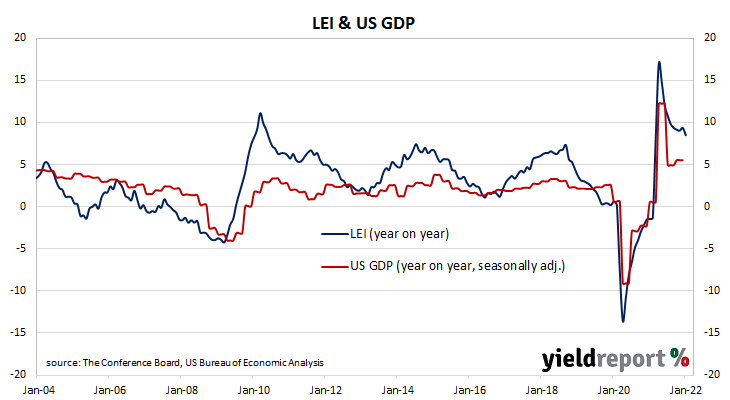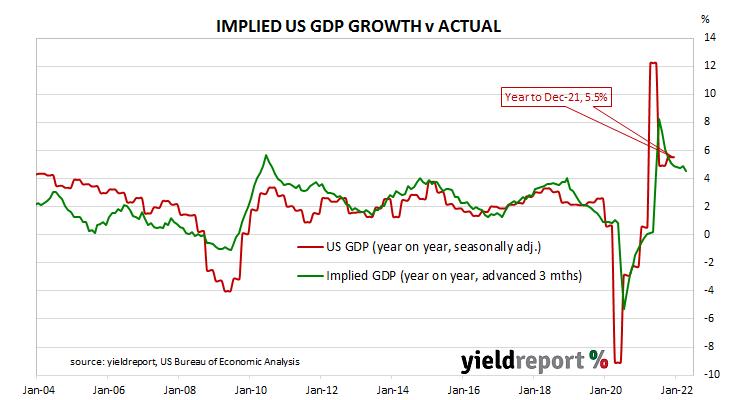Summary: US leading index down 0.3% in January; in contrast with +0.2% expected; first decline since February 2021; points to “continued, albeit slower, economic growth” into northern spring; forecasts 3.5% growth for calendar 2022.
The Conference Board Leading Economic Index (LEI) is a composite index composed of ten sub-indices which are thought to be sensitive to changes in the US economy. The Conference Board describes it as an index which attempts to signal growth peaks and troughs; turning points in the index have historically occurred prior to changes in aggregate economic activity. Readings from March and April of 2020 signalled “a deep US recession” while subsequent readings indicated the US economy would recover rapidly.
The latest reading of the LEI indicates it declined by 0.3% in January. The result contrasted with the +0.2% consensus forecast as well as December’s revised figure of 0.7%. On an annual basis, the LEI growth rate slowed from 9.4% to 8.5%.
“Initial claims for unemployment insurance, consumers’ outlook and declines in stock prices, and the average work week in manufacturing all contributed to the decline, the first since February 2021,” said Ataman Ozyildirim, Senior Director of Economic Research at The Conference Board.
US long-term Treasury bond yields fell noticeably on the day as investors moved to lower-risk assets. By the close of business, the 10-year yield had lost 5bps to 1.92% and the 30-year Treasury yield had shed 6bps to 2.24%. The 2-year yield finished unchanged at 1.47%.
In terms of US Fed policy, expectations for the federal funds range over the next 12 months softened a little while still implying a swag of 25bps rises. April contracts implied an effective federal funds rate of 0.395%, 32bps higher than the current spot rate. June contracts implied a rate of 0.815% while March 2023 futures contracts implied an effective federal funds rate of 1.715%, 165bps above the spot rate.
Ozyildirim noted “widespread strengths” among the LEI’s components and said they “still point to continued, albeit slower, economic growth into the spring.”
The Conference Board forecasts March quarter GDP growth “to slow somewhat from the very rapid pace of Q4 2021” but still grow by 3.5% over calendar year 2022. Regression analysis suggests the latest reading implies a 4.5% year-on-year growth rate in April, down from March’s 4.9%.



